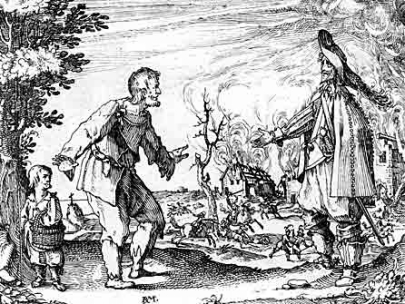Population and the Thirty Years War
Statistics on population and the Thirty Years War fully illustrate the devastation caused by the war. Although there are no accurate population figures, it is safe to say that the population of some parts of Europe declined dramatically during the war, due to a combination of disease, starvation and death in battle.

Historians have identified the following trends:
- 1500 to 1650: Germany experienced a steady decline in population
- 1650 to 1700: the population of Germany steadily recovered.
As the majority of battles were fought in rural areas, these were the areas that suffered the most. According to the historian Langer, the Swedish army alone destroyed 18,000 villages, 2000 castles and 1500 towns in Germany. This means that about a third of German towns were destroyed during the war.
Rural communities suffered badly at the hands of the armies passing through the countryside. To acquire food and provisions the soldiers would frequently pillage villages.
Some cities suffered more than others during the war, with the city of Magdeburg suffering the hardest. At the beginning of war in 1618 its population numbered 25,000, but by 1644 it had fallen to 2,464 and only 400 houses were left standing.
It was possible for some cities to escape destruction if they were not in the path of invading armies. For example, Lower Saxony only suffered a population decrease of 10 per cent from 1618 to 1648, while Pomerania suffered losses of 50 per cent. It is understood that on average, urban area in Germany lost 33 per cent of their population while rural areas experience a 40 per cent loss.
War was also very localised in an area as large as Germany. While Langer’s figures suggest widespread devastation, it must be remembered that much of this destruction was localised. Local conditions were important in determining population figures. Leipzig, for example, continued its trade fair throughout the duration of the war - not something one would expect if the city had been decimated by war or if the population was such that it was not worth selling to.
See also: Prices and the Thirty Years War
MLA Citation/Reference
"Population and the Thirty Years War". HistoryLearning.com. 2026. Web.
